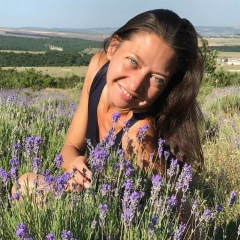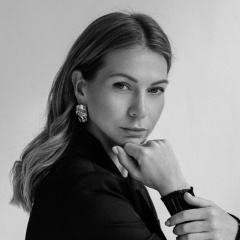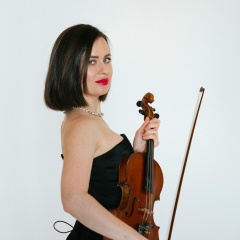ЗИМНЕЕ СОЛНЦЕСТОЯНИЕ
День зимнего солнцестояния в 2014 году - 21 или 22 декабря, в зависимости от временной зоны. Зимнее солнцестояние начинается 21 декабря 2014 в 23:03 UTC или 22 декабря 2014 в 02:03 по московскому времени, когда Солнце входит в 0 ° зодиакального знака Козерог.
Это самый короткий день и самая длинная ночь в году. Зимнее
солнцестояние - одна из главных солнечных точек года в астрологии, наряду с днями весеннего и осеннего равноденствия, летнего солнцестояния. В 2014 году день зимнего солнцестояния совпадает с новолунием, что происходит достаточно редко.
Традиционно в прежние времена на зимнее солнцестояние праздновалось возрождение Солнца, отмечали его ночью, до восхода Солнца. С этим днем связаны праздники Коляда у славян и Йоль у германских народов. Чтобы дать силы Солнцу, которое, по поверьям, должно возродиться в этот день, существовал обычай разжигать ритуальный костер. Часто поленья для костра были дубовые, потому что дуб, как считалось, является космическим деревом. Иногда брали сосну, которая символизировала умирающего бога Солнца. Поленья украшали резьбой и соответствующими символами. Для выполнения ритуала возрождения Солнца брали 13 красных и зеленых свечей с вырезанными на них Солнцем и другими магическими символами.
Старые языческие обычаи дня зимнего солнцестояния включали традицию помещать хлеб или пироги на ветви старых деревьев, лить на деревья сладкие напитки, как дар лесным богам. Это делалось в надежде на то, что в благодарность людям будет дан хороший урожай в предстоящие сезоны.
С приходом христианства древний праздник зимнего солнцестояния был приурочен к Рождеству и началу зимних Святок. По обычаю, в самую длинную ночь года колядовали, гадали на будущее.
Для наших древнейших предков, земледельческих и скотоводческих племен, полностью зависевших от природы, зимнее возрождение солнца после дня солнцеворота было не рядовым, а весьма значительным событием для выживания рода.
Новый год (Солнцеворот и Святки) у древних славян
20 декабря у древних славян было последним днем осени, а 21 декабря, в солнцеворот - день зимнего солнцестояния, начинался Колядень - первый месяц зимы и нового года. В этот же день, в соответствии с природными ритмами, отмечали рождество Коляды, ипостаси одного из главных славянских богов Даждьбога (Дажбога, Дажьбога), воплощавшего Солнце. Празднование Святок - Рождества и Нового года, наполненное весельем, вкусной едой и магическими ритуалами, растягивалось у древних славян на 21 день, помогая скоротать темную холодную зиму. На Святки готовили коливо, или сочиво - кашу с медом и изюмом, и сочевики - сладкие пирожки с творогом и вареньем. Избы украшали куклами бога Велеса (славянского прообраза современного Деда Мороза) и Снегурочки, а на улицах катали горящие колеса и жгли костры, чтобы помочь зарождающемуся зимнему солнцу. От дома к дому ходили колядовщики - молодые парни и девушки, которые исполняли колядки (обрядовые песни с пожеланиями благополучия) и получали в награду угощение. На Святки наряжались в новую одежду и выставляли на столы лучшее угощение для собравшейся вместе семьи. Считалось, "как встретишь Новый год, так его и проведешь.
Дни Святок считались магическими. Люди гадали на будущее, пытаясь предугадать урожай, войны, свадьбы... Поминали умерших родственников, оставляли им угощение и разжигали костры. Переодевались (рядились) в шкуры реальных и мифических животных, нечистой силы, а также примеряли одежду (и роли) других людей и людей противоположенного пола. Особенной властью наделялись в это время темные силы, которые, по поверьям, подступали особенно близко к миру живых. Заметно, что рождественские ритуалы славян очень похожи на ритуалы празднования Самайна у древних кельтов и на празднование Йоля у германцев.
Йоль - Новый год у германских племен
Йоль (Yule, Yuletide) - древнегерманское празднование зимнего солнцестояния и встречи Нового года. Как и древние славяне, жители центральной и северной Европы во время зимнего солнцестояния производили символические действия с огнем. Большое бревно (yule), специально заготовленное заранее, воспламеняли с помощью углей, оставшихся от такого же бревна прошлогоднего солнцестояния, и медленно сжигали в течение 12 дней. Оставшиеся угли собирали и бережно хранили до следующего года ("сохранение огня"), часть из них смешивали с семенами для посева, чтобы придать земле силу родившегося Солнца. Огонь присутствовал в виде свечей, которыми украшали жилища и деревья вокруг дома, призывая добрых духов - усопших предков, оберегающих своих живущих на земле родственников. Отголоски этого старинного обряда - популярные сегодня гирлянды из огней и свечи, которыми мы украшаем наши дома на Рождество и Новый год. Вечнозеленые растения, без которых и сегодня не обходятся зимние праздники (остролист, плющ, омела и сама рождественская елка) символизируют вечную жизнь и напоминают о том, что холод и темнота зимы обязательно уступят место весеннему теплу и зелени.
Зимнее Солнцестояние – это время, которое нужно использовать для построения планов на будущее; если вы серьезно и ответственно подойдете к этому вопросу, все ваши планы легко реализуются. Однако любое дело, начатое в период зимнего Солнцестояния, потребует от вас выдержки и терпения, что не должно вас огорчать, - результат превзойдет ваши ожидания, нужно только научиться ждать.
День зимнего солнцестояния в 2014 году - 21 или 22 декабря, в зависимости от временной зоны. Зимнее солнцестояние начинается 21 декабря 2014 в 23:03 UTC или 22 декабря 2014 в 02:03 по московскому времени, когда Солнце входит в 0 ° зодиакального знака Козерог.
Это самый короткий день и самая длинная ночь в году. Зимнее
солнцестояние - одна из главных солнечных точек года в астрологии, наряду с днями весеннего и осеннего равноденствия, летнего солнцестояния. В 2014 году день зимнего солнцестояния совпадает с новолунием, что происходит достаточно редко.
Традиционно в прежние времена на зимнее солнцестояние праздновалось возрождение Солнца, отмечали его ночью, до восхода Солнца. С этим днем связаны праздники Коляда у славян и Йоль у германских народов. Чтобы дать силы Солнцу, которое, по поверьям, должно возродиться в этот день, существовал обычай разжигать ритуальный костер. Часто поленья для костра были дубовые, потому что дуб, как считалось, является космическим деревом. Иногда брали сосну, которая символизировала умирающего бога Солнца. Поленья украшали резьбой и соответствующими символами. Для выполнения ритуала возрождения Солнца брали 13 красных и зеленых свечей с вырезанными на них Солнцем и другими магическими символами.
Старые языческие обычаи дня зимнего солнцестояния включали традицию помещать хлеб или пироги на ветви старых деревьев, лить на деревья сладкие напитки, как дар лесным богам. Это делалось в надежде на то, что в благодарность людям будет дан хороший урожай в предстоящие сезоны.
С приходом христианства древний праздник зимнего солнцестояния был приурочен к Рождеству и началу зимних Святок. По обычаю, в самую длинную ночь года колядовали, гадали на будущее.
Для наших древнейших предков, земледельческих и скотоводческих племен, полностью зависевших от природы, зимнее возрождение солнца после дня солнцеворота было не рядовым, а весьма значительным событием для выживания рода.
Новый год (Солнцеворот и Святки) у древних славян
20 декабря у древних славян было последним днем осени, а 21 декабря, в солнцеворот - день зимнего солнцестояния, начинался Колядень - первый месяц зимы и нового года. В этот же день, в соответствии с природными ритмами, отмечали рождество Коляды, ипостаси одного из главных славянских богов Даждьбога (Дажбога, Дажьбога), воплощавшего Солнце. Празднование Святок - Рождества и Нового года, наполненное весельем, вкусной едой и магическими ритуалами, растягивалось у древних славян на 21 день, помогая скоротать темную холодную зиму. На Святки готовили коливо, или сочиво - кашу с медом и изюмом, и сочевики - сладкие пирожки с творогом и вареньем. Избы украшали куклами бога Велеса (славянского прообраза современного Деда Мороза) и Снегурочки, а на улицах катали горящие колеса и жгли костры, чтобы помочь зарождающемуся зимнему солнцу. От дома к дому ходили колядовщики - молодые парни и девушки, которые исполняли колядки (обрядовые песни с пожеланиями благополучия) и получали в награду угощение. На Святки наряжались в новую одежду и выставляли на столы лучшее угощение для собравшейся вместе семьи. Считалось, "как встретишь Новый год, так его и проведешь.
Дни Святок считались магическими. Люди гадали на будущее, пытаясь предугадать урожай, войны, свадьбы... Поминали умерших родственников, оставляли им угощение и разжигали костры. Переодевались (рядились) в шкуры реальных и мифических животных, нечистой силы, а также примеряли одежду (и роли) других людей и людей противоположенного пола. Особенной властью наделялись в это время темные силы, которые, по поверьям, подступали особенно близко к миру живых. Заметно, что рождественские ритуалы славян очень похожи на ритуалы празднования Самайна у древних кельтов и на празднование Йоля у германцев.
Йоль - Новый год у германских племен
Йоль (Yule, Yuletide) - древнегерманское празднование зимнего солнцестояния и встречи Нового года. Как и древние славяне, жители центральной и северной Европы во время зимнего солнцестояния производили символические действия с огнем. Большое бревно (yule), специально заготовленное заранее, воспламеняли с помощью углей, оставшихся от такого же бревна прошлогоднего солнцестояния, и медленно сжигали в течение 12 дней. Оставшиеся угли собирали и бережно хранили до следующего года ("сохранение огня"), часть из них смешивали с семенами для посева, чтобы придать земле силу родившегося Солнца. Огонь присутствовал в виде свечей, которыми украшали жилища и деревья вокруг дома, призывая добрых духов - усопших предков, оберегающих своих живущих на земле родственников. Отголоски этого старинного обряда - популярные сегодня гирлянды из огней и свечи, которыми мы украшаем наши дома на Рождество и Новый год. Вечнозеленые растения, без которых и сегодня не обходятся зимние праздники (остролист, плющ, омела и сама рождественская елка) символизируют вечную жизнь и напоминают о том, что холод и темнота зимы обязательно уступят место весеннему теплу и зелени.
Зимнее Солнцестояние – это время, которое нужно использовать для построения планов на будущее; если вы серьезно и ответственно подойдете к этому вопросу, все ваши планы легко реализуются. Однако любое дело, начатое в период зимнего Солнцестояния, потребует от вас выдержки и терпения, что не должно вас огорчать, - результат превзойдет ваши ожидания, нужно только научиться ждать.
WINTER SOLSTICE
The winter solstice in 2014 is December 21 or 22, depending on the time zone. The winter solstice begins on December 21, 2014 at 23:03 UTC or December 22, 2014 at 02:03 Moscow time, when the Sun enters the 0 ° zodiac sign Capricorn.
It is the shortest day and the longest night of the year. Winter
the solstice is one of the main solar points of the year in astrology, along with the days of the spring and autumn equinox, the summer solstice. In 2014, the winter solstice coincides with the new moon, which rarely happens.
Traditionally, in earlier times, the rebirth of the Sun was celebrated at the winter solstice, it was celebrated at night, before sunrise. The holidays of Kolyada among the Slavs and Yule among the Germanic peoples are associated with this day. To give strength to the Sun, which, according to popular belief, should be reborn that day, there was a custom to light a ritual bonfire. Often the logs for the fire were oak, because the oak was believed to be a space tree. Sometimes they took a pine tree, which symbolized the dying sun god. Logs were decorated with carvings and corresponding symbols. To perform the ritual of rebirth of the Sun, 13 red and green candles were taken with the Sun and other magic symbols carved on them.
The old pagan customs of the winter solstice included the tradition of placing bread or cakes on the branches of old trees, pouring sweet drinks on trees as a gift to the forest gods. This was done in the hope that, in gratitude to the people, a good harvest would be given in the coming seasons.
With the advent of Christianity, the ancient holiday of the winter solstice was timed to coincide with Christmas and the beginning of winter Christmas time. According to custom, on the longest night of the year they were caroling, guessing for the future.
For our ancient ancestors, agricultural and pastoral tribes, completely dependent on nature, the winter revival of the sun after the day of the solstice was not an ordinary event, but a very significant event for the survival of the genus.
New Year (Solstice and Christmas time) among the ancient Slavs
December 20, the ancient Slavs was the last day of autumn, and December 21, in the solstice - the day of the winter solstice, began Kolyaden - the first month of winter and new year. On the same day, in accordance with natural rhythms, the Christmas of Kolyada was celebrated, the hypostasis of one of the main Slavic gods Dazhdbog (Dazhbog, Dazhbog), who embodied the Sun. The celebration of Christmas time - Christmas and New Year, filled with fun, delicious food and magic rituals, was stretched among the ancient Slavs for 21 days, helping to pass the dark cold winter. At Christmas time, they cooked koliva, or sochi - porridge with honey and raisins, and nomads - sweet cakes with cottage cheese and jam. The huts were decorated with dolls of the god Veles (the Slavic prototype of modern Father Frost) and the Snow Maiden, and burning wheels rolled on the streets and burned bonfires to help the nascent winter sun. From home to home there were carollers — young boys and girls who sang carols (ritual songs with wishes for well-being) and received a treat as a reward. At Christmas time they dressed up in new clothes and put on the tables the best treats for the family gathered together. It was believed, "as you celebrate the New Year, so spend it.
The days of Christmas time were considered magical. People wondered for the future, trying to predict the harvest, wars, weddings ... They remembered the deceased relatives, left them refreshments and made bonfires. Dressed (dressed) in the skins of real and mythical animals, evil spirits, and also tried on the clothes (and roles) of other people and people of the opposite sex. Special powers were given at that time to the dark forces, which, according to popular beliefs, came especially close to the world of the living. It is noticeable that the Christmas rituals of the Slavs are very similar to the rituals of the Samhain celebration of the ancient Celts and the Yule celebration of the Germans.
Yule - New Year in Germanic tribes
Yule (Yule, Yuletide) - an ancient German celebration of the winter solstice and New Year's Eve. Like the ancient Slavs, the inhabitants of central and northern Europe during the winter solstice performed symbolic actions with fire. A large log (yule), specially prepared in advance, was ignited using coals left over from the same log of last year's solstice, and slowly burned for 12 days. The remaining coals were collected and carefully stored until the next year ("preserving the fire"), some of them were mixed with seeds for sowing in order to give the earth the power of the born Sun. The fire was present in the form of candles that adorned the dwellings and trees around the house, invoking good spirits - deceased ancestors, protecting their relatives living on the earth. The echoes of this ancient rite are the garlands of lights and candles that we use to decorate our homes for Christmas and New Year. Evergreens, without which the winter holidays do not even exist today (holly, ivy, mistletoe and the Christmas tree itself) symbolize eternal life and remind us that the cold and darkness of winter will surely give way to spring warmth and greenery.
The Winter Solstice is the time
The winter solstice in 2014 is December 21 or 22, depending on the time zone. The winter solstice begins on December 21, 2014 at 23:03 UTC or December 22, 2014 at 02:03 Moscow time, when the Sun enters the 0 ° zodiac sign Capricorn.
It is the shortest day and the longest night of the year. Winter
the solstice is one of the main solar points of the year in astrology, along with the days of the spring and autumn equinox, the summer solstice. In 2014, the winter solstice coincides with the new moon, which rarely happens.
Traditionally, in earlier times, the rebirth of the Sun was celebrated at the winter solstice, it was celebrated at night, before sunrise. The holidays of Kolyada among the Slavs and Yule among the Germanic peoples are associated with this day. To give strength to the Sun, which, according to popular belief, should be reborn that day, there was a custom to light a ritual bonfire. Often the logs for the fire were oak, because the oak was believed to be a space tree. Sometimes they took a pine tree, which symbolized the dying sun god. Logs were decorated with carvings and corresponding symbols. To perform the ritual of rebirth of the Sun, 13 red and green candles were taken with the Sun and other magic symbols carved on them.
The old pagan customs of the winter solstice included the tradition of placing bread or cakes on the branches of old trees, pouring sweet drinks on trees as a gift to the forest gods. This was done in the hope that, in gratitude to the people, a good harvest would be given in the coming seasons.
With the advent of Christianity, the ancient holiday of the winter solstice was timed to coincide with Christmas and the beginning of winter Christmas time. According to custom, on the longest night of the year they were caroling, guessing for the future.
For our ancient ancestors, agricultural and pastoral tribes, completely dependent on nature, the winter revival of the sun after the day of the solstice was not an ordinary event, but a very significant event for the survival of the genus.
New Year (Solstice and Christmas time) among the ancient Slavs
December 20, the ancient Slavs was the last day of autumn, and December 21, in the solstice - the day of the winter solstice, began Kolyaden - the first month of winter and new year. On the same day, in accordance with natural rhythms, the Christmas of Kolyada was celebrated, the hypostasis of one of the main Slavic gods Dazhdbog (Dazhbog, Dazhbog), who embodied the Sun. The celebration of Christmas time - Christmas and New Year, filled with fun, delicious food and magic rituals, was stretched among the ancient Slavs for 21 days, helping to pass the dark cold winter. At Christmas time, they cooked koliva, or sochi - porridge with honey and raisins, and nomads - sweet cakes with cottage cheese and jam. The huts were decorated with dolls of the god Veles (the Slavic prototype of modern Father Frost) and the Snow Maiden, and burning wheels rolled on the streets and burned bonfires to help the nascent winter sun. From home to home there were carollers — young boys and girls who sang carols (ritual songs with wishes for well-being) and received a treat as a reward. At Christmas time they dressed up in new clothes and put on the tables the best treats for the family gathered together. It was believed, "as you celebrate the New Year, so spend it.
The days of Christmas time were considered magical. People wondered for the future, trying to predict the harvest, wars, weddings ... They remembered the deceased relatives, left them refreshments and made bonfires. Dressed (dressed) in the skins of real and mythical animals, evil spirits, and also tried on the clothes (and roles) of other people and people of the opposite sex. Special powers were given at that time to the dark forces, which, according to popular beliefs, came especially close to the world of the living. It is noticeable that the Christmas rituals of the Slavs are very similar to the rituals of the Samhain celebration of the ancient Celts and the Yule celebration of the Germans.
Yule - New Year in Germanic tribes
Yule (Yule, Yuletide) - an ancient German celebration of the winter solstice and New Year's Eve. Like the ancient Slavs, the inhabitants of central and northern Europe during the winter solstice performed symbolic actions with fire. A large log (yule), specially prepared in advance, was ignited using coals left over from the same log of last year's solstice, and slowly burned for 12 days. The remaining coals were collected and carefully stored until the next year ("preserving the fire"), some of them were mixed with seeds for sowing in order to give the earth the power of the born Sun. The fire was present in the form of candles that adorned the dwellings and trees around the house, invoking good spirits - deceased ancestors, protecting their relatives living on the earth. The echoes of this ancient rite are the garlands of lights and candles that we use to decorate our homes for Christmas and New Year. Evergreens, without which the winter holidays do not even exist today (holly, ivy, mistletoe and the Christmas tree itself) symbolize eternal life and remind us that the cold and darkness of winter will surely give way to spring warmth and greenery.
The Winter Solstice is the time

У записи 21 лайков,
2 репостов.
2 репостов.
Эту запись оставил(а) на своей стене Екатерина Снегирева









































